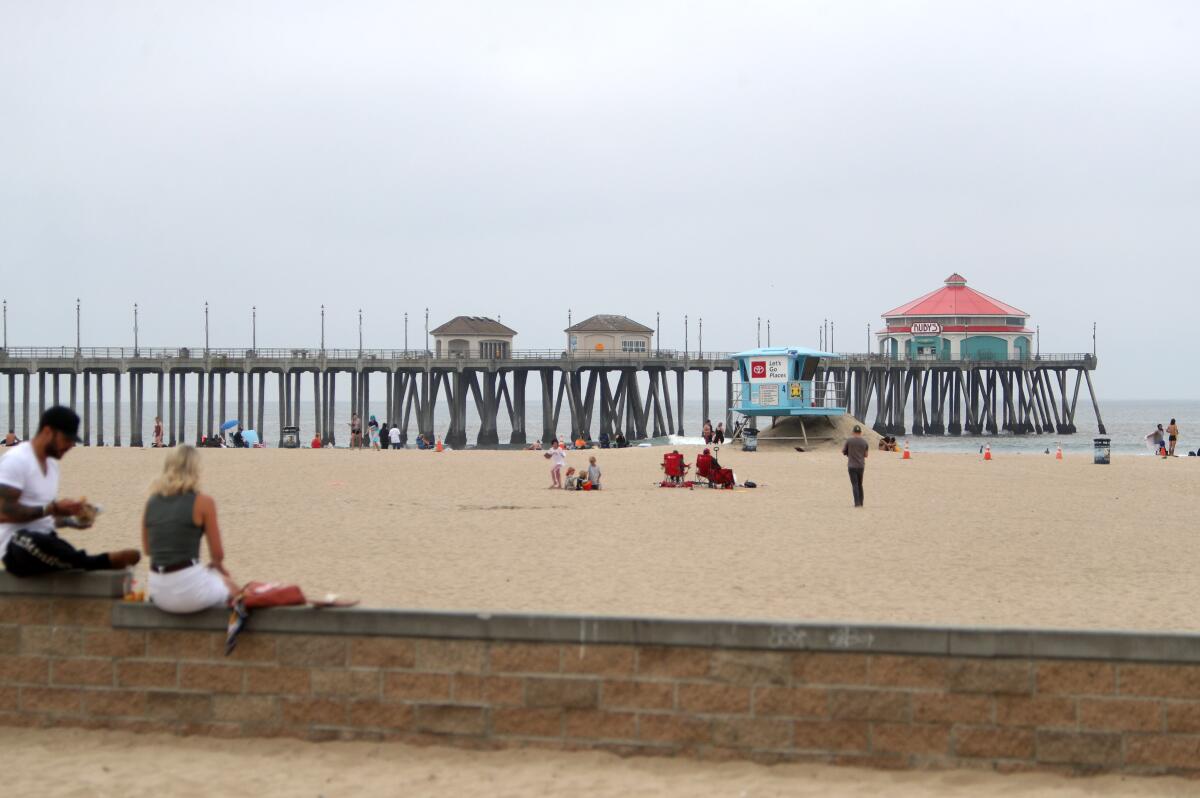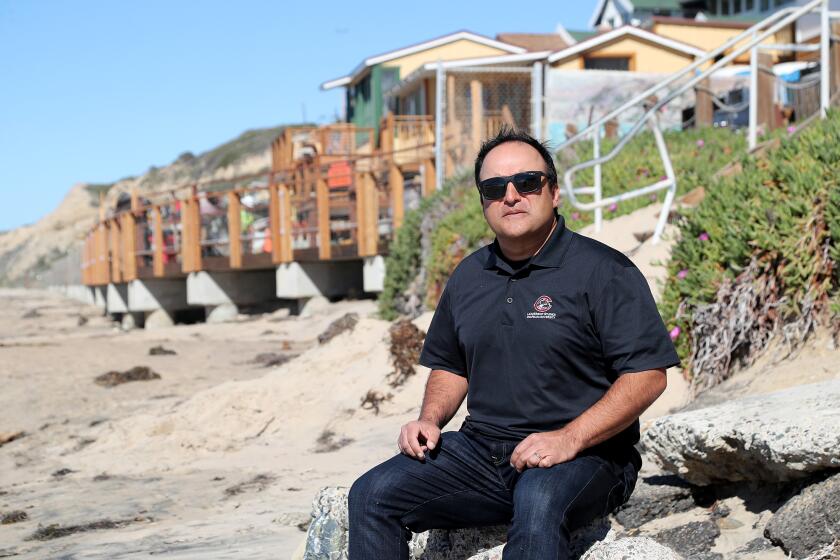Sand restoration project receives federal funding to combat coastal erosion on O.C. beaches

About $15.5 million in federal funds will be allocated toward the restoration of Orange County’s beaches and coastline, following passage of a budget bill in Congress last week.
The total cost of the Surfside-Sunset and Newport Beach Replenishment Project is estimated at around $23 million. The remaining $7.5 million needed to complete it will be supplemented by local agencies and jurisdictions.
The project will be planned by the U.S. Army Corps Engineers, though it was unclear as of Friday afternoon when plans are expected to be executed.
About 1.75 million cubic yards of sand will be deposited in Surfside, where it is expected to eventually make its way down the coast.
“This sand replenishment project is critical for the Newport Beach peninsula and West Newport community, as it will provide greater flood protection and the long-term maintenance of our most precious natural resource,” said Newport Beach City Councilwoman Diane Dixon, who represents the Balboa Peninsula and West Newport, in a statement.
The sand restoration project initially came about in response to impacts from federal flood channels constructed in the 1940s.
When the federal government widened Anaheim Bay and constructed various breakwaters and jetties for the new military bases and created flood channels, the result was the narrowing of beaches up and down the coastline due to extreme erosion.

The project to ameliorate those issues, then called the San Gabriel to Newport Bay Beach Renourishment Project, began in 1964 and was done in increments through 1990. By 2000, the U.S. Army Corps Engineers declared it would no longer be funding any further stages to replenish the sands, which left local communities responsible.
Newport Beach staff confirmed the city has done smaller sand restoration projects but nothing on the scale of what has been proposed in Surfside in recent years.
City spokesman John Pope said the county annually dredges the mouth of the Santa Ana River and deposits the sediment off the coast of Newport Beach to eventually wash ashore. Additionally, some of the sand that was dredged from the harbor last year was also deposited offshore to help build out the coastline.
In Huntington Beach, Mayor Barbara Delgleize said in a statement announcing the funding that she was thankful to Rep. Michelle Steel (R-Seal Beach) but added that such restoration would ideally occur every seven to 10 years to maintain local beaches.
That hasn’t happened since 2009, according to Delgleize.
While there is a degree of natural erosion that was expected, OC Coastkeeper marine restoration director Claire Arre said it has gotten more extreme in the last two decades.
The documentary, “Coastal Crisis: California’s Vanishing Beaches,” will air at 3:30 p.m. on KDOC-TV this Sunday.
“Especially in San Clemente, they’re not getting the natural sand shift historically that they would usually get, whether that’s due to sea level rise or, in general, because of changing of water currents due to climate change,” Arre said. “There are some spots just based on topography that are hit a little bit harder, but it’s been seen and recognized throughout the area.”
One such spot is near Balboa Pier, city officials said, where the distance between the parking lot and the beach itself has narrowed.
“Sand moves,” said Arre. “Sand likes to deposit in areas without a lot of high water traffic. It likes to deposit in bays and in little protected corners. It does not like to be in places where we get waves and the surfers will attest, our coastline has a lot of waves.”
Arre said sand typically would settle and build on shore during the summer months when Orange County residents are most likely to frequent the beaches.

The problem is during the winter months when larger weather events occur — such as last winter’s record-breaking rainstorm in December — because sand will get pulled up in the waves and away from the shoreline.
“This kind of normal ebb and flow is starting to be altered. More is getting pulled away and less is getting deposited,” said Arre.
Without conscious efforts to restore the coastline, Arre said Orange County’s beaches will eventually just be rock, and the water will only continue to get closer to land and cause infrastructural issues.
Newport Beach city engineers stressed that the Surfside-Sunset and Newport Beach Replenishment Project does not mean an end to flooding in Newport Beach. It is only a necessary maintenance project for the viability of local beaches. Sand berms will still be needed, and residents should still exercise caution during high tides.
All the latest on Orange County from Orange County.
Get our free TimesOC newsletter.
You may occasionally receive promotional content from the Daily Pilot.





